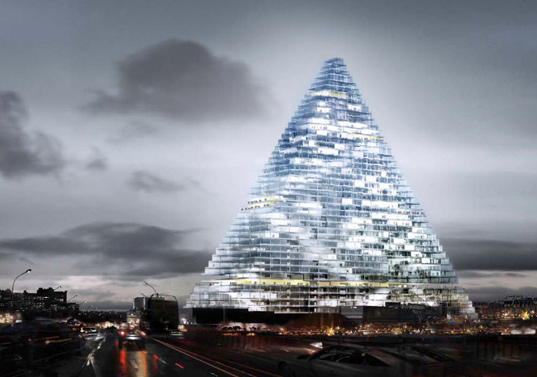Architects, we wrote in a previous post, struggle to find an aesthetics proper to the metamodern structure of feeling. A particularly interesting exception to this rule is the office of Herzog & de Meuron. ‘In some ways’, we observed:
Herzog & de Meuron have always, through-out their careers, attempted to find formal alternatives to architectural postmodernism, an attempt which even tempted them to briefly return to the modernist purity of Le Corbusier. Their most recent designs, however, clearly articulate a metamodern attitude in and through a metamodern style: New Romanticism.
So far, however, we have not explained why we think they do so. Not on this blog, at least. The following excerpt is taken from Timotheus Vermeulen and Robin van den Akker’s recently published essay ‘notes on metamodernism‘.
Herzog & de Meuron’s more recent designs express a metamodern attitude in and through a style that can only be called neoromantic. A few brief descriptions suffice, here, to get a hint of their look and feel. The exterior of the De Young Museum (San Francisco, 2005) is clad in copper plates that will slowly turn green as a result of oxidization; the interior of the Walker Art Center (Minneapolis, 2005) holds such natural elements as chandeliers of rock and crystal; and the fac ̧ade of the Caixa Forum (Madrid, 2008) appears to be partly rusting and partly overtaken by vegetation. While the above examples are appropriations or expansions of existing sites, their recent designs for whole new structures are even more telling. The library of the Brandenburg Technical University (Cottbus, 2004) is a gothic castle with a translucent fac ̧ ade overlain with white lettering; the Chinese national stadium (Beijing, 2008) looks like a ‘‘dark and enchanted forest’’ from up close and like a giant bird’s nest from a far; the residential skyscraper at 560 Leonard street (NYC, under construction) is reminiscent of an eroded rock; the Miami Art Museum (Florida, under construction) contains Babylonic hanging gardens; the Elbe Philharmonic Hall (Hamburg, under construction) seems to be a giant iceberg washed ashore; and Project Triangle (Paris, under construction) is an immense glass pyramid that casts no shadows while it hovers over the city.
These buildings attempt to negotiate between such opposite poles as culture and nature, the finite and the infinite, the commonplace and the ethereal, a formal structure, and a formalist unstructuring (as opposed to deconstruction). Crucially, these attempts are unsuccessful as the buildings never so much seem to balance these distinct poles as oscillate between them. Fragile (bird’s nest), disappearing (iceberg), or perishing (eroded rock) natural phenomena question the solidity of structures more or less built for permanence; while a mythical building (castle) from the days of old seems to be either resurrected from the past or mysteriously unaffected by time. Some edifices seem to be either left to the elements (oxidizing copper, rust) or seamlessly integrated with nature (overgrown walls, hanging gardens); yet others seem to defy the basic laws of geometry and gravity by means of their torsions. Lucid surfaces, radiating with light, give the most of ordinary sites a mysterious appearance; while ancient symbols (Pyramid) points toward transient cultures and the infinity of the cosmos.
Image: Copyright Herzog and de Meuron.

